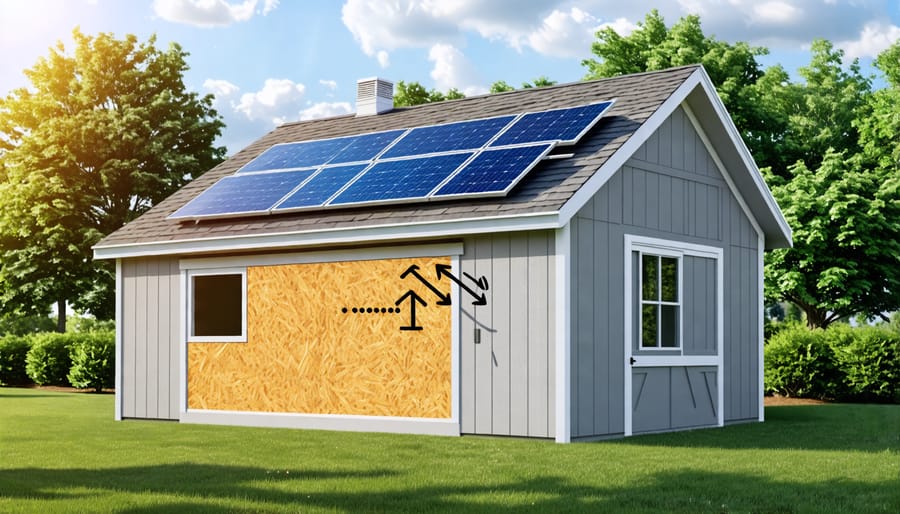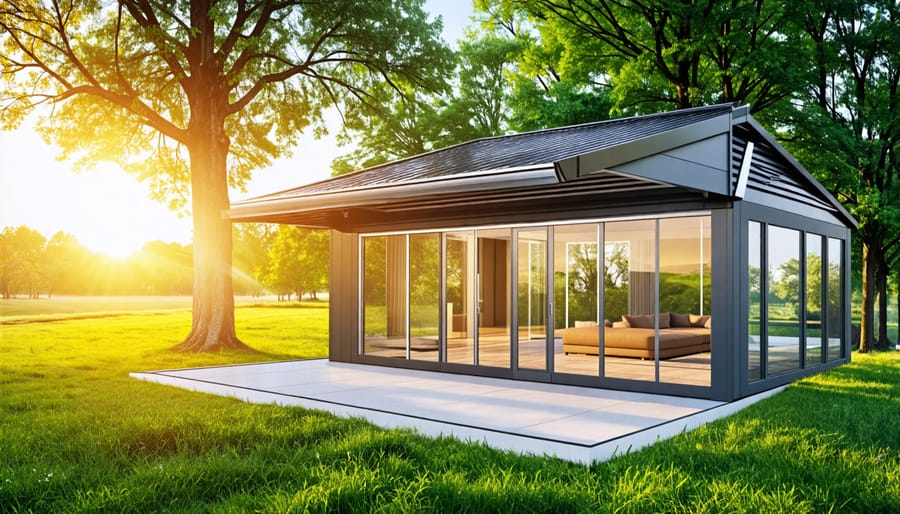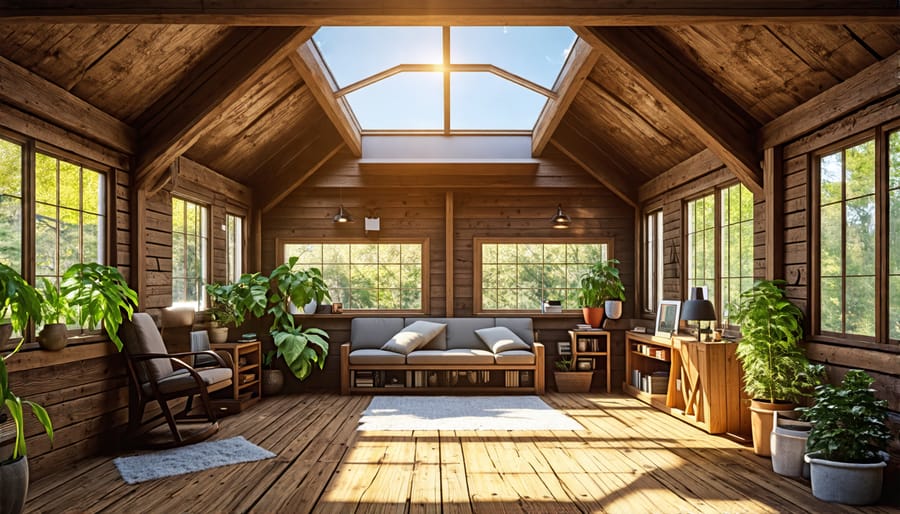8 Energy-Saving Upgrades to Slash Your Storage Shed’s Power Bills

Maximize natural lighting by installing skylights or solar tubes to reduce electricity use for interior lighting. Upgrade to Energy Star certified windows and doors to improve insulation and minimize heat transfer. Install solar panels on the shed roof to generate renewable electricity that can power lights, fans, heaters and small appliances. Enhance ventilation with gable vents, ridge vents or a solar-powered attic fan to reduce the need for air conditioning in warmer months.
Upgrade to a Cool Roof

Cool Roof Material Options
When it comes to making your shed more energy efficient, a cool roof is a smart choice. Reflective paint is an easy, affordable option that helps deflect sunlight and heat. For a more durable solution, consider installing cool roof tiles or shingles. These come in a variety of colors and styles to complement your shed’s aesthetic. Look for options with high solar reflectance and thermal emittance ratings for maximum efficiency. Many cool roofing materials are also designed to withstand harsh weather conditions, ensuring your shed stays comfortable and protected year-round. With the right cool roof, you can significantly reduce your shed’s cooling needs and energy costs.
DIY Cool Roof Installation Tips
Installing a cool roof on your shed can help reduce heat absorption and energy costs. First, clean the existing roof thoroughly and make any necessary repairs. Next, apply a reflective coating designed for your roof material, using a brush, roller, or sprayer. Be sure to follow the manufacturer’s instructions for application and drying times. For best results, apply the coating on a dry, warm day and avoid applying in direct sunlight. With a little effort, you can enjoy the benefits of a cool roof on your shed for years to come.
Maximize Natural Lighting
Maximizing natural lighting in your shed is an effective way to illuminate the interior without relying on electricity. One of the best methods to bring in more natural light is by adding windows to your shed. Strategically placed windows can dramatically brighten up the space, making it more pleasant to spend time in and easier to find items. Skylights are another excellent option, as they allow light to enter from above and can be especially beneficial in areas with limited wall space for windows. For a more focused beam of natural light, consider installing light tubes, which capture sunlight from the roof and channel it into specific areas of your shed. By incorporating these natural lighting solutions, you can create a well-lit, inviting shed interior that doesn’t require any electrical lighting during the day.

Switch to Energy-Efficient Lighting
If your shed requires electric lighting, switching to energy-efficient options like LED or CFL bulbs can significantly reduce energy consumption and costs. These modern lighting solutions use up to 90% less energy than traditional incandescent bulbs while providing the same level of illumination. Not only do they save you money on your electricity bill, but they also last much longer, meaning you won’t need to replace them as often. LED bulbs, in particular, can last up to 50,000 hours – that’s nearly six years of continuous use! By making the simple switch to energy-efficient lighting in your shed, you’ll enjoy bright, reliable light while minimizing your environmental impact and keeping more money in your pocket. It’s a win-win situation for both your wallet and the planet.
Improve the Insulation
Types of Shed Insulation
When insulating your shed, you have several options to consider. Batt insulation, made of fiberglass or mineral wool, is a popular choice for its ease of installation and affordability. Rigid foam board insulation provides excellent thermal resistance and can be cut to fit snugly between wall studs and roof rafters. Loose fill insulation, such as cellulose or blown-in fiberglass, is ideal for hard-to-reach spaces and offers superior coverage. Spray foam insulation, while more expensive, creates an airtight seal and has a high R-value per inch. Consider your shed’s specific needs, budget, and climate when selecting the best insulation type for your energy-efficient upgrade.
Insulation Installation Guidelines
To ensure your shed is energy efficient, install proper insulation in the walls, ceiling, and floor. Begin by sealing any gaps or cracks to prevent air leaks. Choose insulation with a high R-value for maximum effectiveness. When installing, make sure the insulation fits snugly without compression. For walls, consider using rigid foam board or batt insulation. In the ceiling, blown-in or loose-fill insulation works well. Don’t forget to insulate the floor, especially if your shed is raised off the ground. With the right insulation installed correctly, you’ll create a comfortable, energy-saving environment inside your shed.
Harness Solar Power
Installing solar panels on your shed is an excellent way to harness the power of the sun and generate free electricity. By placing solar panels on the roof of your shed, you can reduce your reliance on the power grid and save money on your energy bills. Solar panels come in various sizes and wattages, so you can choose a system that fits your shed’s dimensions and power needs. With a battery storage system, you can even store excess energy for use during cloudy days or at night. While the initial investment in solar panels may be higher than other energy-efficient upgrades, the long-term savings and environmental benefits make it a worthwhile consideration. Plus, with many DIY solar panel kits available, handy homeowners can tackle the installation themselves and enjoy the satisfaction of harnessing renewable energy right in their own backyard.
Conclusion
By implementing some or all of these energy-saving upgrades in your shed, you can reduce its energy consumption, lower operating costs, and make it a more eco-friendly space. From simple changes like switching to LED bulbs and adding insulation to bigger investments like solar panels, there are options to fit every budget and shed size. Not only will these improvements save you money in the long run, but they’ll also make your shed a more comfortable and efficient place to work or relax. Consider starting with one or two upgrades and gradually adding more as your budget allows. With a little effort, you can transform your shed into an energy-smart haven.

